 We will be sending out mid-year transcripts in July. In an effort to conserve resources and to continue providing the level of service that our customers are accustomed to, after July we will no longer be emailing out Roads Scholar transcripts every six months.
Instead, we will provide a certificate of completion at the end of each Roads Scholar class for students to turn in to their agency for tracking purposes.
For the students, we now have a Roads Scholar wallet card available for tracking which classes they have taken.
Electronic transcripts will still be available upon request and printed copies will be available at the fall and spring schools.
To request a wallet card or transcript, contact the T2 Center by email or at (503) 986-2855. Please contact Rebekah with any questions on this new process.
|
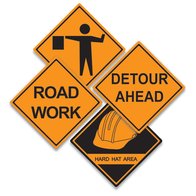 Work Zone Safety
In May, we recognized Oregon's Transportation Safety Awareness month, and 20 days after the kick-off, one of ODOT's contractors lost an employee to another tragic work zone crash. Below is an excerpt from the June InsideODOT.
"The statistics are grim. Using the most recent five years of data, on average, Oregon experiences a work zone crash every 18 hours. Distracted driving and speed are the most common causes of these crashes —something motorists can control.
Please, tell your friends and family: Slow down. Pay attention. The life you save may be your own — or that of someone you love."
With the nice weather, many of you have already begun your construction season. Please be diligent in watching for hazards and following your training and agency policies.
As always, be safe out there!
|

T2 Center Director
|
 Safe Transportation for Every Pedestrian (STEP)
Cost-effective countermeasures with known safety benefits can help reduce pedestrian fatalities at uncontrolled crossing locations and un-signalized intersections.
Pedestrians account for over 17.5 percent of all fatalities in motor vehicle traffic crashes, and the majority of these deaths occur at uncontrolled crossing locations such as mid-block or un-signalized intersections. These are among the most common locations for pedestrian fatalities generally because of inadequate pedestrian crossing facilities and insufficient or inconvenient crossing opportunities, all of which create barriers to safe, convenient, and complete pedestrian networks.
Expecting pedestrians to travel significantly out of their way to cross a roadway to reach their destination is unrealistic and counterproductive to encouraging healthier transportation options. By focusing on uncontrolled locations, agencies can address a significant national safety problem and improve quality of life for pedestrians of all ages and abilities.
Pedestrian Safety Countermeasures
FHWA is promoting the following pedestrian safety countermeasures through the fourth round of Every Day Counts (EDC-4):
- Road Diets can reduce vehicle speeds and the number of lanes pedestrians cross, and they can create space to add new pedestrian facilities.
- Rectangular rapid flash beacons (RRFBs) can help drivers detect pedestrians by making crossings more visible.
- Pedestrian hybrid beacons (PHBs) are a beneficial intermediate option between RRFBs and a full pedestrian signal. They provide positive stop control in areas without the high pedestrian traffic volumes that typically warrant signal installation.
- Pedestrian refuge islands allow pedestrians a safe place to stop at the midpoint of the roadway before crossing the remaining distance. This is particularly helpful for older pedestrians or others with limited mobility.
- Raised crosswalks can reduce vehicle speeds.
- Crosswalk visibility enhancements, such as crosswalk lighting and enhanced signing and marking, help drivers detect pedestrians - particularly at night.
State of the Practice
Road Diets, pedestrian refuge islands, and PHBs are all considered Proven Safety Countermeasures by the Federal Highway Administration (FHWA). The FHWA is also promoting Road Diets through EDC-3.
Communities benefitting from their use include Austin, Texas, where at least 39 PHBs are already installed and residents can request additional sites for them. In Michigan, the Department of Transportation (DOT) developed a Road Diets checklist to ensure smooth administrative procedures.
Countermeasures such as RRFBs, crosswalk lighting, and raised crosswalks are being promoted through FHWA’s PEDSAFE, a tool that helps transportation agencies diagnose and treat pedestrian safety issues. PEDSAFE includes numerous case studies that describe how communities across the country have implemented these safety improvements. The RRFB has been demonstrated to greatly increase driver yielding rates in several communities, including St. Petersburg, Florida.
This EDC-4 effort will help more communities deploy these pedestrian safety improvements based on their specific roadway contexts and needs. It also aligns with U.S. DOT’s Safer People, Safer Streets initiative and with other U.S. DOT efforts such as Ladders of Opportunity, which aims to provide people with safe, reliable and affordable connections to employment, education, healthcare and other essential services. STEP is also an important action in FHWA’s Strategic Agenda for Pedestrian and Bicycle Transportation, which is a collaborative framework for pedestrian and bicycle planning, design, and research efforts being developed over the next five years.
Benefits
- Improved Safety. Countermeasures are available that offer proven solutions for reducing pedestrian fatalities at uncontrolled crossing locations.
- Targeted Investment. By focusing on uncontrolled locations, agencies can address a significant national pedestrian safety problem.
- Enhanced Quality of Life. Improving crossing opportunities boosts quality of life for pedestrians of all ages and abilities.
Resources
What's this new State Funded Local Projects program?
State Funded Local Projects, or SFLP, is a new process for the 2015-18 STIP to provide state funds for federal projects selected under ODOT or Transportation Management Area funding programs.
Local agency projects are eligible for SFLP if they are selected through All Roads Transportation Safety, Enhance, Local Bridge, and Active Transportation Discretionary selection processes. A portion of Surface Transportation Program Urban and Transportation Alternatives Program funds managed by Transportation Management Areas are also eligible for state funding.
All local agencies are eligible for state funding through SFLP, subject to certain limitations. Agencies outside of TMAs can state-fund projects up to $5 million in total cost. Agencies inside TMAs can state fund projects up to $1 million in total cost. Federal aid projects not eligible for state funding must be delivered as federal projects by either a certified agency or by ODOT.
Differences, similarities
SFLP is similar to the current Surface Transportation Program Fund Exchange process that many cities and counties use in that it provides 94 cents on the dollar up to the state share of project costs. SFLP is different in that:
- state funding is provided to a specific project selected through ODOT or TMA processes instead of a general allocation to agencies;
- state funds are spent first, followed by local agency funds if needed; and
- local agencies must complete a Final Inspection Form with their local agency liaison at project closeout.
SFLP does not change or replace the current STP Fund Exchange process, but instead provides a new state funding option. If you have questions, contact Cole Grisham, AICP, local public agency coordinator, (503) 986-3531 (nicholas.grisham@odot.state.or.us).
The Center for Accelerating Innovation facilitates the rapid deployment of innovation into the transportation community based on the Every Day Counts (EDC) initiative, fosters and supports the State Transportation Innovation Councils' (STIC) national network, supports innovation thru the Accelerated Innovation Deployment (AID) demonstration grant program, and shares the success of innovation at the national and local levels (Resources).
There are currently four pre-recorded Innovation Exchange Webinars available for viewing:
Pavement Preservation: When, Where, and How Webinar
Flyer PDF HTML
Accelerated Innovation Deployment (AID) Demonstration: How to Write a Proposal
Flyer PDF HTML
Innovation and Sustainable Transportation Evaluation Process (INSTEP) Webinar
Flyer PDF HTML
Integrating NEPA and Permitting Webinar
Flyer PDF HTML
There are also five pre-recorded Ultra-High Performance Concrete webinars and one upcoming webinar available:
UHPC Implementation Stories
July 11, 1–2:30 p.m. ET
Register
EDC-4 UHPC 2017 Webinar Series: Construction, Inspection and Quality Assurance of UHPC Connections
EDC-4 UHPC 2017 Webinar Series: Structural Design, Detailing and Specifying UHPC for Prefabricated Bridge Element Connections (PBEC)
EDC-4 UHPC 2017 Webinar Series: Why UHPC for Prefabricated Bridge Element Connections?
EDC-4 UHPC 2017 Webinar Series: Introduction to UHPC
EDC-4 Innovation Overview: Ultra-High Performance Concrete Connections
 Does You Work Zone Pass This Test?
Cards are available by request that provides a four-step "pass or fail" of a work zone. To order, contact T2.
|
Heat Stress Posters
Work-Water-Rest and Preventing Heat Related Illness posters are available by contacting the T2 Center.
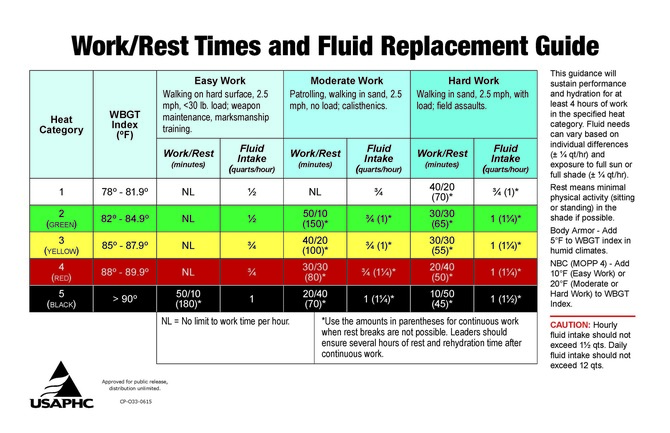 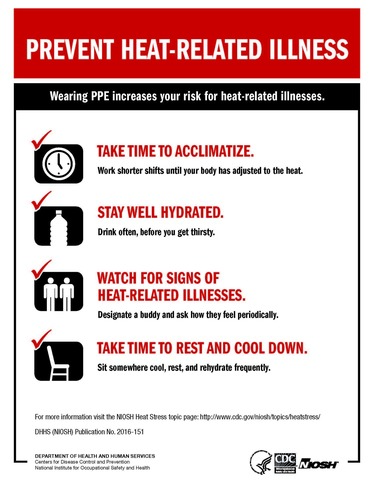 |
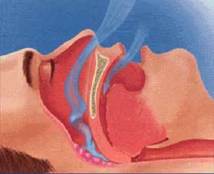 by Bill Kolzow
The article in our last newsletter offered some brief information about
insomnia, one of the most common sleep disorders. There are many other disorders affecting 40
million or more people in the United States.
Sleep apnea, often called the “silent killer,” is one of the most
prevalent. It occurs in at least 11 –
12% of the population. That percentage
continues to rise, perhaps indicating that we are getting better at diagnosing
sleep apnea. It is estimated that at
least 75% of those who have it are un-diagnosed and that possibly 25% or more of
the population is at high risk. The
symptoms are readily discussed when you see a doctor or enter a hospital these
days. Sleep apnea is particularly common
among people who snore heavily and among the very overweight.
With sleep apnea, one’s airway “collapses” and breathing
repeatedly stops for 10 – 60 seconds.
Carbon dioxide then builds up. There
are two types of sleep apnea: Central Sleep Apnea, where the brain fails to
signal the breathing muscles; and Obstructive Sleep Apnea, where the breathing
effort continues, but obstructions affect it.
Several treatment methods have been developed over the
years, and more keep coming. One favored
treatment is CPAP (continuous positive airway pressure) in which oxygen is
directed into the mouth/nose. Many of us
are familiar with the basic CPAP apparatus, and numerous variations continue to
be developed to make it more comfortable, easier to use, smaller, more
transportable, more aesthetically pleasing, and so on. Oral appliances can be used for some mild
cases. Different devices and
applications are numerous and need to be prescribed by your doctor.
Sleep apnea is not something to leave untreated. It contributes to lack of quality sleep, which is very
important to us all. Relationships between the disorder and other
possible problems have been documented:
- Risk of stroke
- Depressive disorder (depression)
- Possible link to
learning defects in both children and adults
- Hypertension
- Diabetes
- Job performance
If
you or those close to you note any possible indications of this or other sleep
disorders, seek medical attention.
|
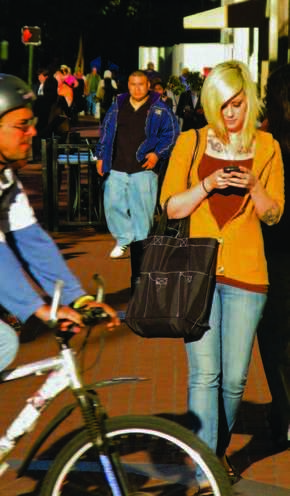 Distracted walking? Yeah, it’s a thing!
It’s true, distracted walking can be funny - at times. You’ve seen the video about the woman walking into the pool, or the guy who almost walks into a black bear.
But distracted walking can also be very dangerous. An estimated 5,997 pedestrian traffic fatalities occurred in 2016, according to a report from the Governors Highway Safety Association. That’s an 11 percent rise over 2015.
National Safety Council data indicates distracted walking incidents involving cell phones accounted for more than 11,100 injuries from 2000 to 2011. Four more things to know:
- 68 percent of those injured in distracted walking incidents are women.
- 54 percent are age 40 or younger.
- Nearly 80 percent of the injuries are due to a fall.
Pedestrian risk increases when walkers move outside of marked crosswalks and are out late at night, particularly in low-visibility areas. In its report, GHSA highlights data from across the country that indicates:
- 82 percent of pedestrian traffic fatalities occur outside of intersections.
- About half of pedestrian fatalities occur between 6 p.m. and midnight.
- 74 percent of pedestrian fatalities occur after dark.
Distracted walkers can miss hazards such as surface and elevation changes — not to mention oncoming traffic. Drivers – particularly distracted drivers — can miss walkers. When the two collide, the result is never something to laugh about. Think about the potential consequences, and then set things aside and focus on your task. When you’re safely home, you can watch more funny videos on YouTube.
Reprinted with permission from InsideODOT.
|
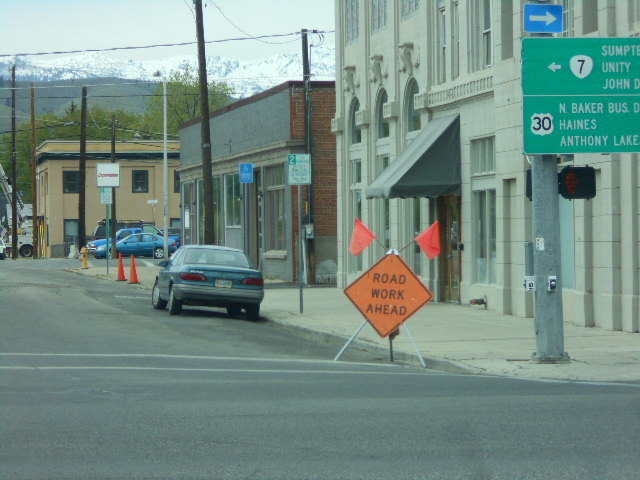
Construction Inspection of Structures Series: Subsurface
The
"Subsurface" course is the first course in the "Construction
Inspection of Structures Series." This course provides an overview
of the subsurface and foundation-related features of structures that need
to be monitored and inspected during construction. The focus is on the
inspection of structures specifically related to the geotechnical
“connection” between the structure and earth.
This course, which is
recommended for 4.5 professional development hours, is designed for
technicians and inspectors, but is also an excellent refresher for
supervisors and managers.
Upon completion of this
course, participants will be able to:
- Explain the key types,
activities, and safety practices involved in subsurface
construction;
- Describe the activities
that are done to prepare the subsurface for construction;
- Explain how falsework and
temporary work bridges are utilized during subsurface construction;
- Explain how piles are
used to establish bridge foundations;
- Describe the inspection
activities that should be performed during pile foundation
construction;
- Explain how drilled
shafts are used to establish bridge foundations;
- Describe the inspection
activities that should be performed during drilled shaft foundation
construction;
- Explain how spread
footings are used to establish bridge foundations; and
- Describe the inspection
activities that should be performed during spread footing foundation
construction.
Construction Inspection of Structures Series:
Substructures
The
"Substructures" course is the second course in the "Construction
Inspection of Structures Series." This course provides an
introduction to substructures and key inspection elements, specifically
the components that support the girders or beams of the superstructure
deck, such as abutments, bents, and piers.
Topics include general
construction considerations, reinforcement and falsework, bridge
drainage, cast-in-place, precast, 3D technology, and as-builts.
This course, which is
recommended for 3 professional development hours, is designed for
individuals with an interest in bridge construction in the following
roles: minimal experience and/or entry-level construction engineers,
inspectors, and technicians.
Upon completion of this
course, participants will be able to:
- Identify the key types,
activities, and safety practices involved in substructure
construction;
- Describe how falsework
and forms are used to prepare the substructure for bridge
construction;
- Identify the different
types of retaining walls and their applications;
- Explain how retaining
walls are inspected during construction;
- Describe the different
types of abutments and their applications; and
- Explain how abutments are
inspected during construction.
Preventative Maintenance Concepts for State Fleet
Operations
This course focuses on
preventative maintenance (PM) programs for equipment fleet operations,
which involve a systematic and proactive schedule of work that provides
inspection, detection, and correction. PM programs are the key element in
supporting a cost-effective fleet operation. These programs reduce
equipment operating and ownership costs by minimizing unscheduled
catastrophic repairs, equipment downtimes, and loss of operational
productivity.
This 3.5-hour course is
designed for anyone seeking to develop or improve an equipment fleet
preventative maintenance program and anyone that may participate in the
PM program.
Upon completion of this
course, participants will be able to:
- Explain common PM program
terms and concepts;
- Communicate the
operational and cost benefits of an effective PM program;
- Identify the components
and processes required to set up a PM program;
- Explain the roles and
responsibilities of fleet managers, fleet maintenance supervisors,
fleet maintenance technicians, and equipment operators; and
- Understand the importance
of capturing data and the use of reporting tools.
All TC3 free courses can be viewed at https://training.transportation.org/category_item.aspx?id=FC
This was a common sign up until October of 2003, when MUTCD
phased the sign out due to poor crash-worthiness. This sign does not meet the current standards written on page 35 of the 2011 OTTCH handbook. All warning
and regulatory signs used for temporary traffic control shall be
retro-reflective. Flexible (roll-up) signs may be installed on portable
sign supports or delineator posts. Rigid signs, as shown, may be used on
barricades or other supports when appropriately crash tested or when mounted on
a vehicle.
Currently existing rigid signs may only be used in emergency
situations and may be used though their life cycle (until they lose retroreflectivity, as shown in this picture). Rigid signs may not be used for
regularly occurring flooding, slides, or similar situations that can be
expected in a particular location. Additional information may be found in
the 2011 Oregon Temporary Traffic Control Handbook and in the Quality Guidelines
for Temporary Traffic Control Devices & Features published by ATTSA.
It is not uncommon to find this type of sign on many city and county roadways
in Oregon due to the cost of new signs and sign supports.
Our new web address is www.oregon.gov/ODOT/Programs/T2. Please feel free to contact us with any questions or comments you have.

|